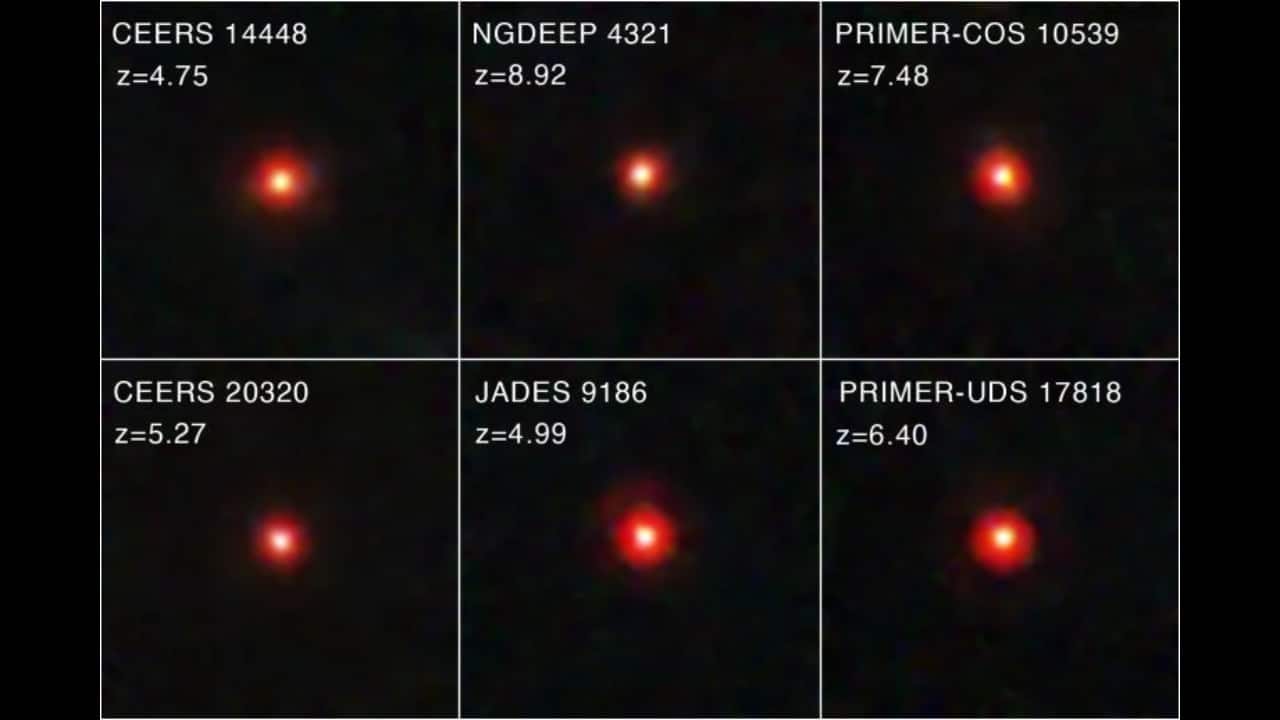



NASA's James Webb Space Telescope has revealed unusual red dots in the distant universe. These red objects, known as "little red dots" (LRDs), raise fresh questions. Scientists discovered them during Webb's early operations, with many dating back to the first 1.5 billion years after the Big Bang.
Mysterious Origins and Black Hole ConnectionA team of astronomers studied these LRDs, focusing on their origins. They found that most of these objects could be galaxies with growing black holes at their centres. The discovery challenges previous theories about the early universe’s structure.
LRDs became most common around 600 million years after the Big Bang. However, their numbers dropped sharply around 1.5 billion years after. The researchers found that 70% of these objects showed signs of an accreting black hole. This indicates that many LRDs are active galactic nuclei (AGN), where a black hole pulls in surrounding gas.
 A group of astronomers analysed data from the James Webb Space Telescope, examining multiple surveys to create one of the largest collections of “little red dots” (LRDs) so far. They began with the Cosmic Evolution Early Release Science (CEERS) survey and later expanded their research to other extragalactic legacy fields, such as the JWST Advanced Deep Extragalactic Survey (JADES) and the Next Generation Deep Extragalactic Exploratory Public (NGDEEP) survey. (Image: NASA)New Theories on Universe Growth
A group of astronomers analysed data from the James Webb Space Telescope, examining multiple surveys to create one of the largest collections of “little red dots” (LRDs) so far. They began with the Cosmic Evolution Early Release Science (CEERS) survey and later expanded their research to other extragalactic legacy fields, such as the JWST Advanced Deep Extragalactic Survey (JADES) and the Next Generation Deep Extragalactic Exploratory Public (NGDEEP) survey. (Image: NASA)New Theories on Universe GrowthThe findings also challenge earlier cosmological assumptions. Some initially believed the rapid growth of these galaxies could break current theories. However, the new research suggests that these objects are not galaxies with many stars. Instead, their light is mainly from growing black holes.
Despite some unanswered questions, scientists are hopeful. The study of LRDs offers new insights into the universe’s early years. It also opens up further investigation into black hole growth and galaxy evolution.
This research was shared at the 245th American Astronomical Society meeting and will be published in The Astrophysical Journal.
Discover the latest Business News, Sensex, and Nifty updates. Obtain Personal Finance insights, tax queries, and expert opinions on Moneycontrol or download the Moneycontrol App to stay updated!
Find the best of Al News in one place, specially curated for you every weekend.
Stay on top of the latest tech trends and biggest startup news.